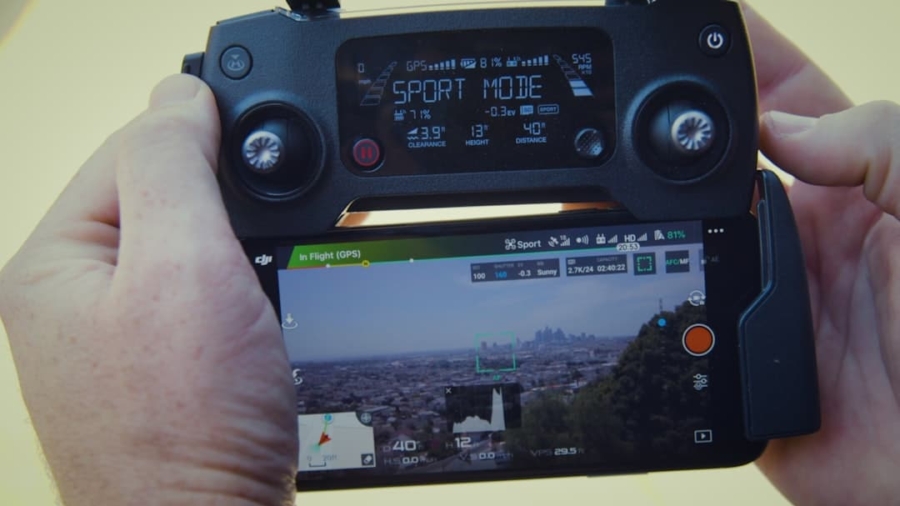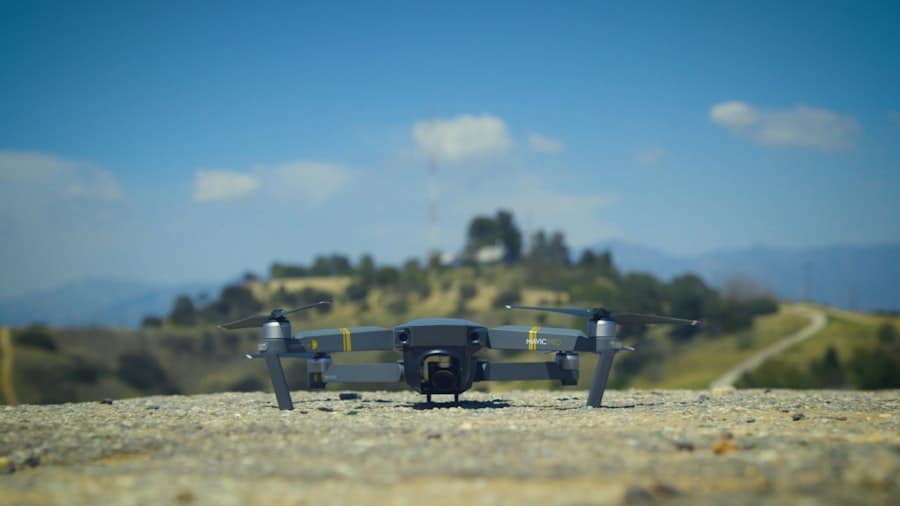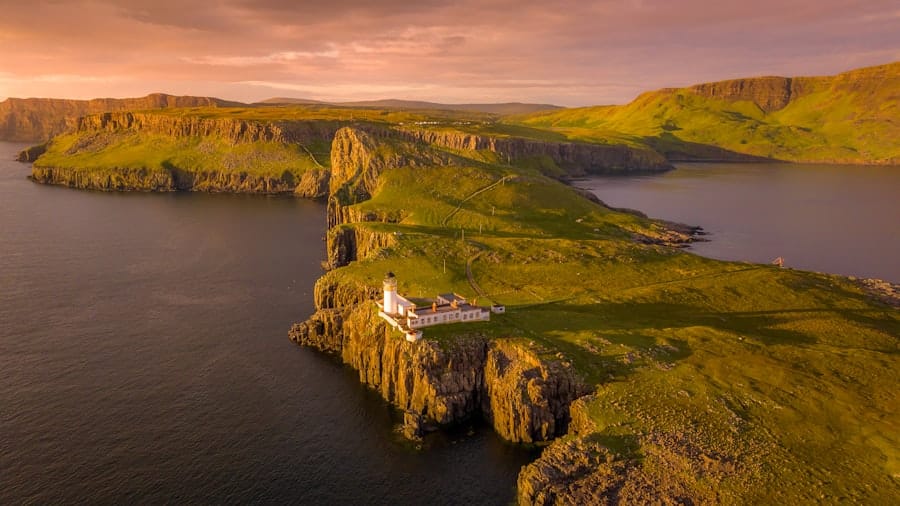Aerial cinematography has undergone a remarkable transformation since its inception, evolving from the use of cumbersome equipment to the sleek, agile drones we see today. In the early days of filmmaking, capturing aerial shots required the use of helicopters or fixed-wing aircraft, which were not only expensive but also limited in their maneuverability. The introduction of the helicopter-mounted camera in the 1960s marked a significant advancement, allowing filmmakers to achieve sweeping shots that were previously unattainable.
However, this method came with its own set of challenges, including high operational costs and logistical complexities, which often restricted its use to big-budget productions. As technology progressed, filmmakers began to explore alternative methods for capturing aerial footage. The advent of remote-controlled model aircraft in the late 20th century provided a new avenue for aerial cinematography, albeit with limited capabilities.
These models were often unstable and required skilled operators to navigate them effectively. The real game-changer came with the development of quadcopters and drones in the 21st century. Equipped with high-definition cameras and advanced stabilization systems, these drones revolutionized aerial cinematography by making it accessible to a broader range of filmmakers.
The ability to capture stunning aerial shots without the need for extensive equipment or large crews opened up new creative possibilities and democratized the art of filmmaking.
Key Takeaways
- Aerial cinematography has evolved from traditional methods to the use of drones, revolutionizing the way filmmakers capture stunning visuals.
- Drone technology has had a significant impact on filmmaking, allowing for more creative and dynamic shots while reducing production costs.
- The advantages of using drones for cinematography include their ability to access difficult or dangerous locations, capture unique perspectives, and provide smooth and stable footage.
- Drone cinematography has risen in popularity in Hollywood, with major productions utilizing drones to achieve breathtaking aerial shots.
- Drones are also being increasingly used in television and streaming content, offering a cost-effective and efficient way to capture high-quality aerial footage.
The Impact of Drone Technology on Filmmaking
The impact of drone technology on filmmaking has been profound, reshaping not only how films are shot but also how stories are told. Drones have enabled filmmakers to capture breathtaking visuals from angles and perspectives that were once considered impractical or impossible. For instance, the ability to fly low over landscapes or weave through tight spaces allows for dynamic storytelling that immerses viewers in the narrative.
This newfound freedom has led to innovative techniques that enhance the visual language of cinema, making it more engaging and visually striking. Moreover, drones have significantly reduced production costs associated with aerial cinematography. Traditional methods often required hiring helicopters and specialized crews, which could inflate budgets considerably.
With drones, filmmakers can achieve similar results at a fraction of the cost, making aerial shots more accessible to independent filmmakers and smaller productions. This shift has not only democratized filmmaking but has also encouraged a surge in creativity, as more filmmakers can experiment with aerial shots without the financial constraints that once limited their options. As a result, we see a growing number of films and documentaries incorporating drone footage, enriching the visual tapestry of modern cinema.
The Advantages of Using Drones for Cinematography
Drones offer a multitude of advantages that make them an invaluable tool for cinematographers. One of the most significant benefits is their versatility. Drones can be equipped with various camera systems, allowing filmmakers to choose the best setup for their specific needs.
Whether it’s a lightweight mirrorless camera for high-resolution shots or a heavier cinema camera for professional-grade footage, drones can adapt to different filming requirements. This flexibility enables filmmakers to achieve their desired aesthetic without being constrained by equipment limitations. In addition to versatility, drones provide unparalleled maneuverability.
Unlike traditional aerial platforms, drones can navigate tight spaces and execute complex flight patterns with ease. This capability allows cinematographers to capture unique angles and perspectives that would be challenging or impossible to achieve with larger aircraft. For example, a drone can effortlessly fly through narrow canyons or glide along the edge of a cliff, providing viewers with an immersive experience that draws them into the scene.
Furthermore, advancements in drone technology have led to improved stability and control, resulting in smoother footage that enhances the overall quality of the final product.
The Rise of Drone Cinematography in Hollywood
The rise of drone cinematography in Hollywood has been nothing short of meteoric. Major studios have embraced this technology, integrating it into their filmmaking processes to create visually stunning sequences that captivate audiences. Films such as “Skyfall” and “The Avengers” have showcased the potential of drone footage, utilizing it to enhance action sequences and establish expansive settings.
The ability to capture sweeping vistas and dynamic chase scenes from above has become a hallmark of modern blockbuster filmmaking. Moreover, the use of drones has allowed filmmakers to push creative boundaries further than ever before. Directors are now able to conceptualize shots that were once deemed too ambitious or logistically challenging.
For instance, in “Game of Thrones,” drone technology was employed to capture breathtaking aerial views of vast landscapes and intricate battle scenes, adding depth and scale to the storytelling. This trend has not only influenced feature films but has also permeated other genres, including documentaries and commercials, where stunning visuals are paramount to engaging audiences.
The Use of Drones in Television and Streaming Content
The integration of drones into television and streaming content has transformed how stories are told on smaller screens. With the rise of platforms like Netflix and Amazon Prime Video, there is an increasing demand for high-quality visuals that can compete with traditional cinema. Drones have become an essential tool for television producers looking to elevate their content and provide viewers with captivating imagery.
From nature documentaries showcasing breathtaking landscapes to reality shows capturing dynamic action sequences, drones have expanded the visual possibilities for television programming. In addition to enhancing production value, drones have also facilitated innovative storytelling techniques in television series. For example, shows like “Breaking Bad” and “Stranger Things” have utilized drone footage to create suspenseful moments and establish atmosphere.
The ability to capture sweeping shots of desolate landscapes or urban environments adds layers of depth to the narrative, immersing viewers in the world of the story. As streaming platforms continue to invest in original content, the demand for high-quality visuals will likely drive further adoption of drone technology in television production.
The Influence of Drone Cinematography on Visual Storytelling
Drone cinematography has significantly influenced visual storytelling by providing filmmakers with new tools to convey emotions and themes effectively. The unique perspectives offered by drones allow for a more immersive experience, enabling audiences to connect with characters and narratives on a deeper level.
A lone figure standing on a cliff against a vast landscape can symbolize both vulnerability and strength, enhancing the emotional resonance of the story. Furthermore, drones have enabled filmmakers to experiment with pacing and rhythm in their storytelling. The ability to transition seamlessly between aerial shots and ground-level footage allows for dynamic editing techniques that can heighten tension or create moments of reflection.
For example, a rapid drone flyover followed by a slow zoom into a character’s face can create a powerful juxtaposition that emphasizes their emotional state. This fluidity in visual storytelling has opened up new avenues for creativity, allowing filmmakers to craft narratives that are not only visually stunning but also emotionally impactful.
The Future of Drone Cinematography in Entertainment
As technology continues to advance at an unprecedented pace, the future of drone cinematography in entertainment looks promising. Innovations such as artificial intelligence and machine learning are poised to enhance drone capabilities further, enabling autonomous flight patterns and advanced obstacle avoidance systems. These developments could allow filmmakers to focus more on creative aspects rather than technical challenges, streamlining the production process and expanding creative possibilities.
Moreover, as drones become more affordable and accessible, we can expect an influx of new voices in filmmaking who will leverage this technology to tell diverse stories from unique perspectives. Independent filmmakers will likely continue to push boundaries by incorporating drone footage into their projects, resulting in a rich tapestry of narratives that reflect varied experiences and viewpoints. Additionally, as audiences become more accustomed to seeing drone cinematography in mainstream media, there will be an increasing expectation for high-quality visuals across all forms of entertainment.
The Ethical and Legal Considerations of Drone Cinematography
While drone cinematography offers numerous advantages, it also raises important ethical and legal considerations that filmmakers must navigate carefully. Privacy concerns are at the forefront of these discussions; as drones become more prevalent in public spaces, individuals may feel their privacy is compromised by being filmed without consent. Filmmakers must be mindful of local laws regarding aerial photography and ensure they respect individuals’ rights while capturing footage.
Additionally, safety regulations play a crucial role in drone cinematography. Filmmakers must adhere to guidelines set forth by aviation authorities to ensure safe operation during shoots. This includes obtaining necessary permits for flying in certain areas and maintaining appropriate distances from people and structures.
As drone technology continues to evolve, so too will the legal landscape surrounding its use in filmmaking. Filmmakers must stay informed about changing regulations and best practices to navigate these challenges responsibly while harnessing the creative potential that drones offer. In conclusion, while drone cinematography presents exciting opportunities for filmmakers across various mediums, it is essential to approach its use thoughtfully and ethically.
Balancing creativity with responsibility will be key as this technology continues to shape the future of visual storytelling in entertainment.
The rise of drone cinematography in entertainment has revolutionized the way filmmakers capture stunning aerial shots, offering a fresh perspective that was once only achievable with expensive equipment and helicopters. This technological advancement is not only transforming the film industry but also influencing marketing strategies across various sectors. For instance, the integration of drones in marketing campaigns is becoming increasingly popular, as highlighted in the article on This article explores how cutting-edge technologies, including drones, are shaping the future of marketing by providing innovative ways to engage audiences and create compelling visual content. Drone cinematography is the use of unmanned aerial vehicles (UAVs), commonly known as drones, to capture aerial footage for films, television shows, commercials, and other visual media projects. Drone cinematography has revolutionized the way aerial shots are captured in the entertainment industry. It has allowed filmmakers to achieve stunning and dynamic aerial shots at a fraction of the cost of traditional methods such as helicopters or cranes. Using drones for cinematography offers several benefits, including the ability to capture unique and creative aerial perspectives, increased flexibility and maneuverability, cost-effectiveness, and the ability to access locations that may be difficult or dangerous for traditional filming equipment. Several popular films and TV shows have incorporated drone cinematography, including “Game of Thrones,” “The Wolf of Wall Street,” “Jurassic World,” and “The Revenant.” The use of drones for cinematography is subject to regulations and restrictions set by aviation authorities in different countries. These regulations typically include obtaining proper permits, adhering to flight restrictions, and ensuring the safety of crew and the public. Challenges associated with drone cinematography include weather conditions, technical limitations of drones, battery life, and the need for skilled and experienced drone operators to ensure safe and high-quality aerial footage.FAQs
What is drone cinematography?
How has drone cinematography impacted the entertainment industry?
What are the benefits of using drones for cinematography?
What are some popular films or TV shows that have utilized drone cinematography?
What are the regulations and restrictions for using drones in cinematography?
What are some challenges associated with drone cinematography?



